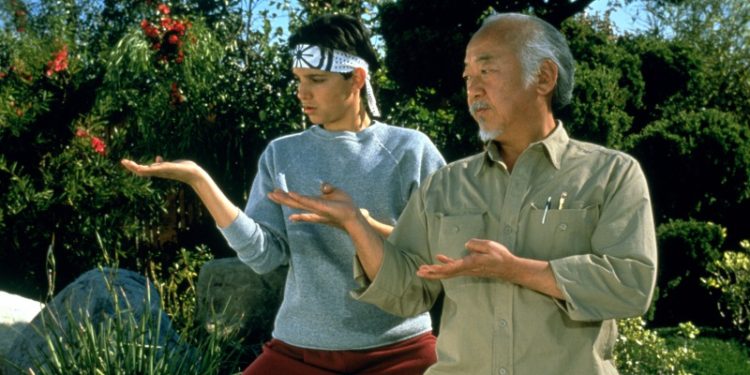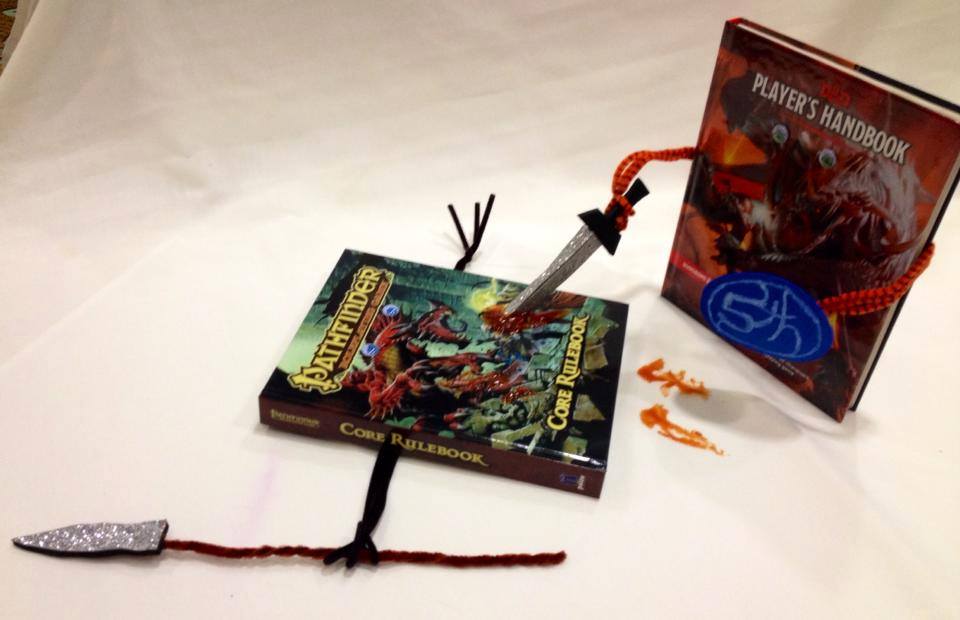The Monk Class, Part Two

Another Monday without a UA article, so another Thursday with a new History of the Classes article: to every cloud, its silver lining. (Just a few hours late; I have a pretty unforgiving head cold.) Today I’m tackling one of the most tangled steps in the monk’s development, otherwise known as Advanced Dungeons & Dragons (First Edition). As a reader kindly pointed out in the comments of last week’s article, there are three monks in 1e: the Player’s Handbook, a variant in Dragon Magazine #53, and finally Oriental Adventures. In terms of development over time, keep in mind that the 1e PH came before Mentzer’s BECMI, and BECMI was the source text for the Rules Cyclopedia, so it’s logical that the Mystic in last week’s article shows more development than what you’ll see here.
Part One | Part Two
Player’s Handbook
The text starts by calling out how unusual the monk class is, though what it really should have said is “we couldn’t be bothered to edit for clarity” (apologies to Mike Carr, but “ascetic” and “aesthetic” are not the same thing). It is certainly the messiest of the classes in the book. Maybe the funniest thing about the text is that it calls out how weak the monk seems (seriously, a whole paragraph on how bad the class is), and insists that that is a false perception. Turns out, no one went for this argument, which is why there are two more versions to talk about today.
- Incredibly steep ability score requirements: Str 15+, Dex 15+, Wis 15+, Con 11+. No way to gain an XP bonus from prime requisites.
- It still breaks my brain that monks gain a scaling AC justified through “agility,” but can never gain an AC bonus from Dex. A 1st level monk with 15 Dex (the minimum to be a monk) has an AC of 10. A 1st level fighter with no armor and a 15 Dex has an AC of 9. We’ll call this “mechanics that fail to support theme.”
- Monks are now required to be Lawful, but may be any flavor of Lawful.
- d4s for Hit Dice, but you get two of them at 1st level for a marginal boost in survivability. At 17th level, you have 18d4 HD, and 17 x any Con bonus. It would be mighty hard to still have another 15+ score to use on Con if you’ve already satisfied your Strength, Dex, and Wisdom requirements.
- Not that it’s easy for players to know what this means, but monks use the thief attack roll table.
- They still get half their level as a damage bonus with weapons, though the text later calls out that this bonus doesn’t keep up with the scaling of their unarmed attack damage and attacks per round. Gygax also seems to suggest that DMs would track half-points of damage.
- Monks can still stun or kill targets if they hit by a margin of 5 or more. The stun is now 1d6 rounds, which is more okay.
- Then things go completely off the rails. Monks don’t get Strength bonuses on to-hit or damage rolls, even though they are required to have a high Strength score. A stunned creature might instead be instantly killed, with a percentile roll based on a nearly unreadable sentence, but which boils down to (target’s AC + (monk’s level – 7)).
- Saving throws as thieves; also they deflect nonmagical missiles with a save vs. petrification, and gain what we’ll later come to call Evasion; at 9th level, this improves to what we’ll later come to call Improved Evasion. I assume everyone reading this knows what I mean?
- Monks are still resistant to surprise, starting at 33.3…% (I’m not sure how Gygax thinks that third-of-a-percentage-point is going to get rolled), and decreasing thereafter, to 32% at 2nd level and 2% per level thereafter.
- Monks still have thief-like skills at thief-like progression.
- Monks can slow their fall (reducing damage taken) from high places if they are within a certain distance of a wall.
- AC scales from 10 at 1st level to -3 at 17th If you’re not familiar with editions prior to 3.0, remember that AC starts at 10 and counts down (or 9 in OD&D).
- Move speed scales from 15” (150 feet per 1-minute combat round… I think…) to 32”; it’s 1” per level except for the very last level, when you gain 2”.
- Attacks per round with unarmed strikes scales from 1 up to 4, passing through 5/4, 3/2, and 5/2 along the way. If you’re unfamiliar with 1e and 2e, 5/4 means that on the fourth round of combat, you make two attacks rather than one. This is miserable to try to remember during play, especially if you’re playing late into the night.
- Unarmed strike damage scales from 1d3 to 8d4. It’s not a particularly smooth progression, jumping all over the place in its dice expressions. Also I don’t own 8d4.
- And a bunch of additional special abilities, spread out from 3rd level to 13th level:
- Speak with animals
- Resistance to ESP
- Immunity to disease, haste, and slow
- Feign death. It’s funny to me how tactical application of feigning death became a through-line of monks for years, even showing up in EverQuest. The legendary origins of the monk have nothing to do with suddenly feigning death in combat, and more to do with meditative practice, but… sure, whatever.
- A self-heal, for 1d4+1, increasing by one point per level thereafter. This is laughably small, even in 1e’s much smaller hit point totals.
- Speak with plants. What’s up, plants?
- A scaling percentage chance to resist beguiling, charms, hypnosis, and suggestion spells.
- Telepathic and mind blast attacks resolve as if the monk has 18 Int. It kinda kills me that there are different resistance mechanics for each different form of mental influence or attack.
- Immunity to poison
- Immunity to geas and quest spells
- Quivering Palm, which requires you to have a pretty good idea of the target’s Hit Dice (not more than your own) and hit points (not more than double your own) and doesn’t work on undead or creatures that require magic weapons to hit (since monk attacks aren’t magic in 1e). Also I don’t know how the game determines if you successfully touch someone to initiate the quivering palm.
- Yada yada followers, restricted ability to accumulate treasure, no wearing armor, narrow list of magic items usable.
In summary, this class turns pretty good if you can survive low levels, but you can’t pick up hirelings to help you – you need party members for that. This is what we might today call an “AP Carry” class (to borrow some League of Legends jargon), much like the wizard. They’re great at high level, but before about 4th level, they are actually worse than having no one at all – they soak up a share of XP and need healing, but contribute almost nothing to encounters. By any modern standard, this class is awful.
Let’s see how Dragon Magazine #53 addresses the matter.
Dragon Magazine #53
Two articles in this issue, as well as the Sage Advice column, tackle the problems of the monk head-on. The first is a hack of the class, while the second drills down into the implications of the Player’s Handbook version. It’s a fine reminder that what we do here in Tribality is mighty similar to the early years of Dragon Magazine. Philip Meyers’s rant on the crippling issues of the core monk are worth the price of admission.
In short, he gives them a bunch of psi-like abilities. This is the first appearance of the monk as positively connected to psionics. If you’ve been reading the History of the Classes since back when I covered psionics, you may recall that OD&D psionics were specifically barred to monks and druids, for no obvious reason.
Meyers proceeds to expand the monk to 21 levels, beefing it up in nearly every regard:
- d6s for Hit Dice (still granting two at 1st level)
- Much faster experience progression, and expansion to 21 levels. The XP total to be a 21st-level monk in the new progression falls in the middle of 16th level of the old progression. (Thus restoring the magic-user to its “rightful” place as the most grueling XP progression.)
- Base AC at 1st level is 6 rather than 10
- Move speed is curtailed slightly, but it’s such a huge speed that no one will notice.
- 5/4 attacks per round are gone, replaced with a slightly better but far easier to run progression.
- Unarmed attacks start at 1d4 damage and scale up to 6d6. Considering that this peak comes at 21st level rather than 17th, it’s arguably a net reduction in power.
- There’s now a special ability at every level. Philip Meyers foresaw the rejection of dead levels by, what, 22 years? Here, I’ll list only new or significantly changed abilities. They’re greatly rearranged, in any case.
- Body equilibrium and mind over body, both psionic abilities with duration limits rather than PP costs
- Empathy, a psionic ability, 1/day
- Invisibility, a psionic power, but with a duration limit rather than a PP cost
- Molecular manipulation, a psionic power, but only usable against inanimate objects. (That’s fine, it’s an incredibly inefficient way to deal damage by the time you’re an 8th-level monk.)
- Slowed aging – the first appearance of what would become Timeless Body
- Body control, a psionic ability, but with a duration limit rather than a PP cost
- Dimension door, a magic-user spell (the first appearance of what would become 3.x’s Abundant Step)
- Mind bar, a psionic ability (or a warning of a low-hanging pipe)
- Object reading, a psionic ability
- Dimension walk, a psionic ability, 1/day.
- Astral projection, a cleric spell, 1/week (the first appearance of the second half of 5e’s Empty Body feature)
- “A premonition of death or serious harm occurs to the monk 1-4 turns before the harmful event, 90% of the time.” Man, this would be difficult to run at the table if emergent play caused the danger.
- Tower of iron will or intellect fortress, both psionic abilities, 1/day.
- Planeshift, a cleric spell, 2/day.
There are also four “optional” addenda:
- Large creatures (“10 feet or more in height”) take half damage from unarmed strikes, as do creatures with an AC of 0 or lower.
- Cut Open Locks and Remove Traps.
- Dueling to advance doesn’t kick in until 12th level.
- Unarmed attacks deal damage as +1 weapons at 10th level and +2 weapons at 18th level.
When fine-tuning a class’s balance, there are certain challenges that one faces. In this case, I think we can comfortably say that the revised monk is too much, but getting to where I think it should be wouldn’t take anything more than some judicious cutting of special abilities. I’d suggest, for starters, that dimension walk, astral projection, and planeshift amount to being a bit redundant, and monks would be better served to have one or two more unified features granting resistance to mental influence, rather than five that work in unconnected ways. Still, this vision of the monk will prove to be transformative and influential in 4e’s Player’s Handbook III, and if you look past balance issues, it is an enjoyable martial arts flick waiting to happen.
But we have one more 1e monk left to go…
Oriental Adventures
Fortunately for the length of this article and the patience of my readers, the OA monk is very close to a simple rephrasing of the PH monk. So what’s different?
- At 1st level, monks get a once-per-day Improved Evasion, which can be declared even after the saving throw roll.
- The Slow Fall feature gets rewritten for simplicity’s sake.
- Damage scaling on unarmed strikes now works completely differently, as each monk practices a Martial Arts style. There’s a six-page section later in the book on how to construct a Martial Arts style. It looks pretty familiar if you ever read the Complete Ninja’s Handbook, which is to say that it’s a perplexing mess. Anyway, as you advance in level, you deal additional dice of damage based on the damage die of your style and principal method.
- Dueling to advance definitely starts at 8th level and, contrary to Meyers’s model, applies to all alignments equally.
- There are no specific references in the text to monks not gaining Dexterity bonuses to AC or Strength bonuses to attack and damage. I’m not sure what to make of that, but I’ll charitably assume those restrictions were consciously removed (because that’s how it should be).
Gygax clearly wasn’t setting out to “fix” anything wrong with the Player’s Handbook monk; rather, he had a more detailed Martial Arts system he wanted to implement, and needed to rewrite the monk so that it plugged into it. The other OA-specific subsystems – family background and Honor – specifically cut the monk out, as the monk has a boatload of restrictions going even beyond the usual list.
To touch lightly on the Martial Arts system, it breaks combat down into a totally different granularity than we’re used to seeing in 1e combat. There are tons of special attacks, many of them pseudo-mystical. The system not only cares about whether you’re kicking, using various locks, pushing, head-butting, striking at vitals, throwing, or using a weapon the style teaches – it also cares whether you’re kicking backward (ugh, facing rules), using the Iron Fist technique (which changes your base unarmed damage to d10… unless your style isn’t fist-based, in which case only one attack uses a d10. This is still better than the completely impenetrable 1e punching and grappling system, in the same way that a claw hammer to the brainpan is better than a sledgehammer to same, all other things being equal.
This brings us – I think – to the end of the 1e monk. If you’re reading this and have played a monk in 1e, I’d like to hear about it. Based on the challenges of qualifying in the first place, to say nothing of the hard road ahead once you started out in the class, I’m guessing it’s a vanishingly small number of folks, but if I’m wrong, that’s awesome too.
The inclusion of detailed Martial Arts rules just highlights to me that the monk class is little more than an agile fighter with a heaping helping of legends, heightened with exoticism. If we viewed every other fighter as able to do the amazing things that one legend said one fighter could do one time, it would be quite a different class – and I think that’s the standard that gave rise to the monk as we see it.
Many thanks to the contributing readers who helped me find the material for this article, and an extra thanks to Geoffrey Fortier for giving me the near-mint copy of Oriental Adventures that he received from someone else dumping their collection!



